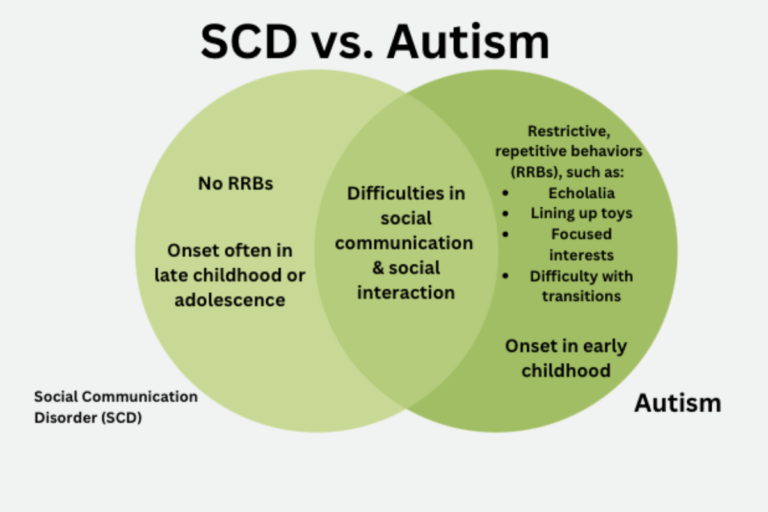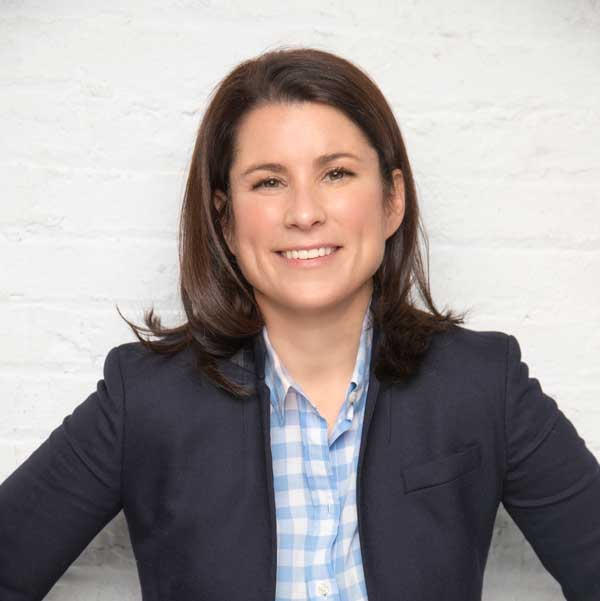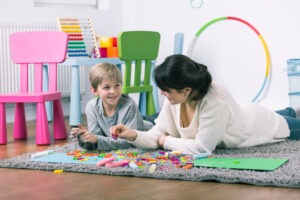By definition, social communication is how and why we use language to interact with other people. This includes both verbal and nonverbal language.
There are several ways we use social communication, like saying “hello” to someone when we see them, communicating differently when speaking to a child versus an adult, and taking turns with talking and listening during a conversation.
Some children have trouble understanding and using social communication behaviors like these, which can lead to a diagnosis of Social Communication Disorder (SCD).
Let’s explore more about what Social Communication Disorder is, and how this unique diagnosis differs from Autism. We’ll also delve into how SCD is diagnosed, and the recommended intervention and support that can help improve a child’s skills.
What is Social Communication Disorder?
According to the American Speech Language Hearing Association (ASHA), Social Communication Disorder (SCD) is characterized by:
“Persistent difficulties with the use of verbal and nonverbal language for social purposes.”
A child with Social Communication Disorder might have difficulties with social understanding, social interacting, pragmatics, and/or processing language. He or she might have communication difficulties with the following skills:
Nonverbal Language
- Understanding nonverbal cues from others (like body language and facial expressions)
- Using nonverbal cues appropriately
Verbal Language
- Engaging in conversation appropriately (taking turns listening/speaking, staying on topic)
- Understanding and using different tones of voice to convey certain emotions
- Understanding and telling stories
- Adjusting communication style according to different social contexts (i.e., who they’re speaking with or the environment)
- Understanding and using figurative language
- Making inferences/drawing conclusions from something that isn’t explicitly said
How common is Social Communication Disorder? More research is needed. One study estimated that between 7-11% of eighth graders had SCD.
When interacting with a child with SCD, you might notice that he or she does things like: gives too much information about a certain topic, has trouble staying on topic, or stands too close to someone when talking.
Differentiating SCD from Autism

The Diagnosis Process
- Persistent difficulties in social communication & interaction across multiple contexts.
- Significant functional limitations in social, academic, or occupational areas.
Intervention & Support
Additional Resources
The speech-language pathologists at TherapyWorks are experienced in working with children with Social Communication Disorder. TherapyWorks offers speech therapy, occupational and physical therapy both in person (in Illinois, Michigan, and Ohio) and through teletherapy (nationwide). If you would like to learn more, or discuss your child’s specific needs, please don’t hesitate to reach out to TherapyWorks!








